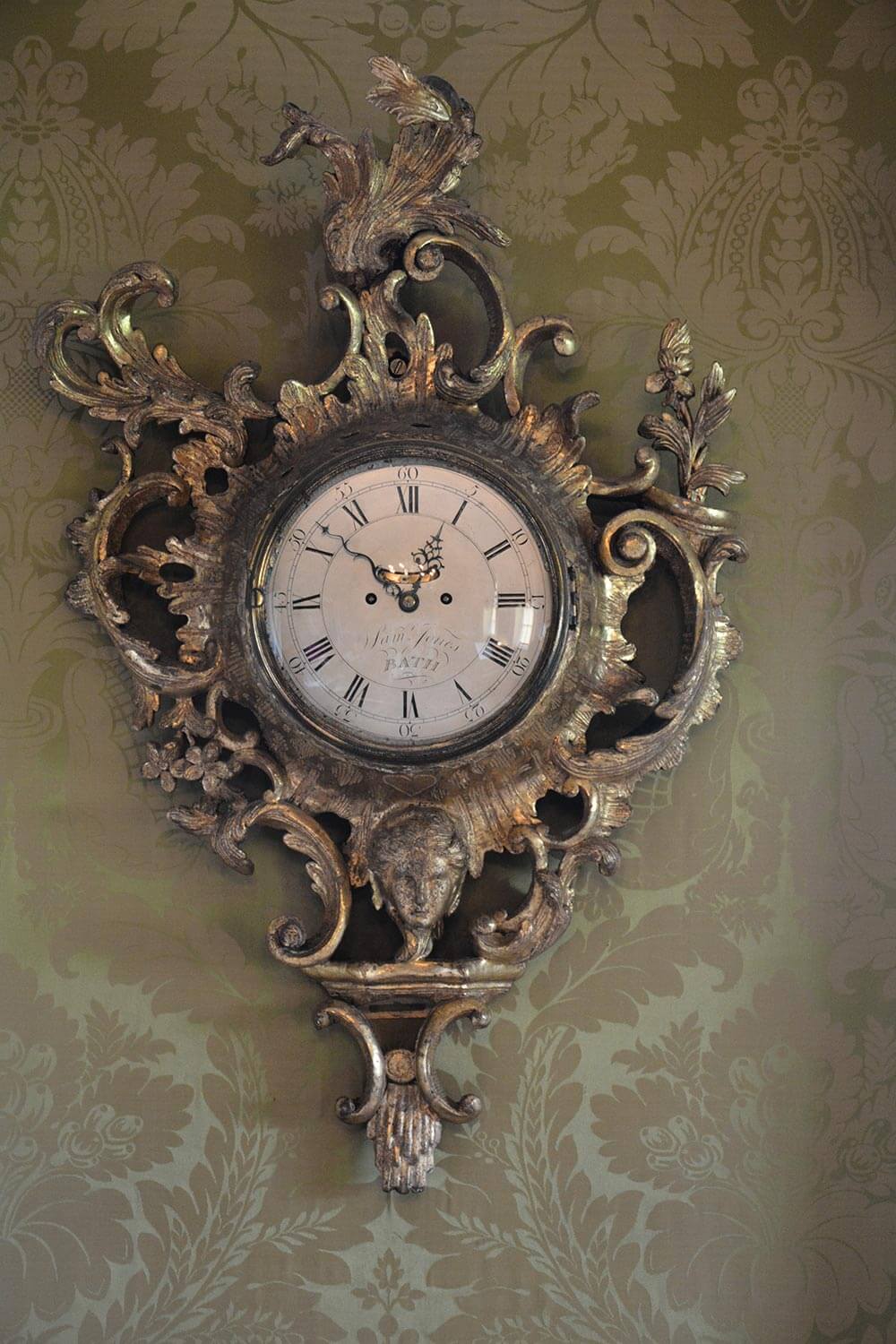Elegant, light and feminine, this room was used mainly for entertaining guests and was the most sumptuously decorated room in the house.
Ladies would take tea here after withdrawing from dinner, leaving the men in the Dining Room. The men would later join the ladies upstairs and perhaps play cards or listen to music played on the harpsichord.

Visitors frequently called to ‘take a dish’ of tea (teacups had no handles, after the Chinese fashion). From 1791 people began to refuse to serve or take sugar in their tea to support the movement to abolish the transatlantic slave trade. The boycott spread, especially amongst women who could not vote to express their opinions. They became known as the ‘anti-saccarites’.
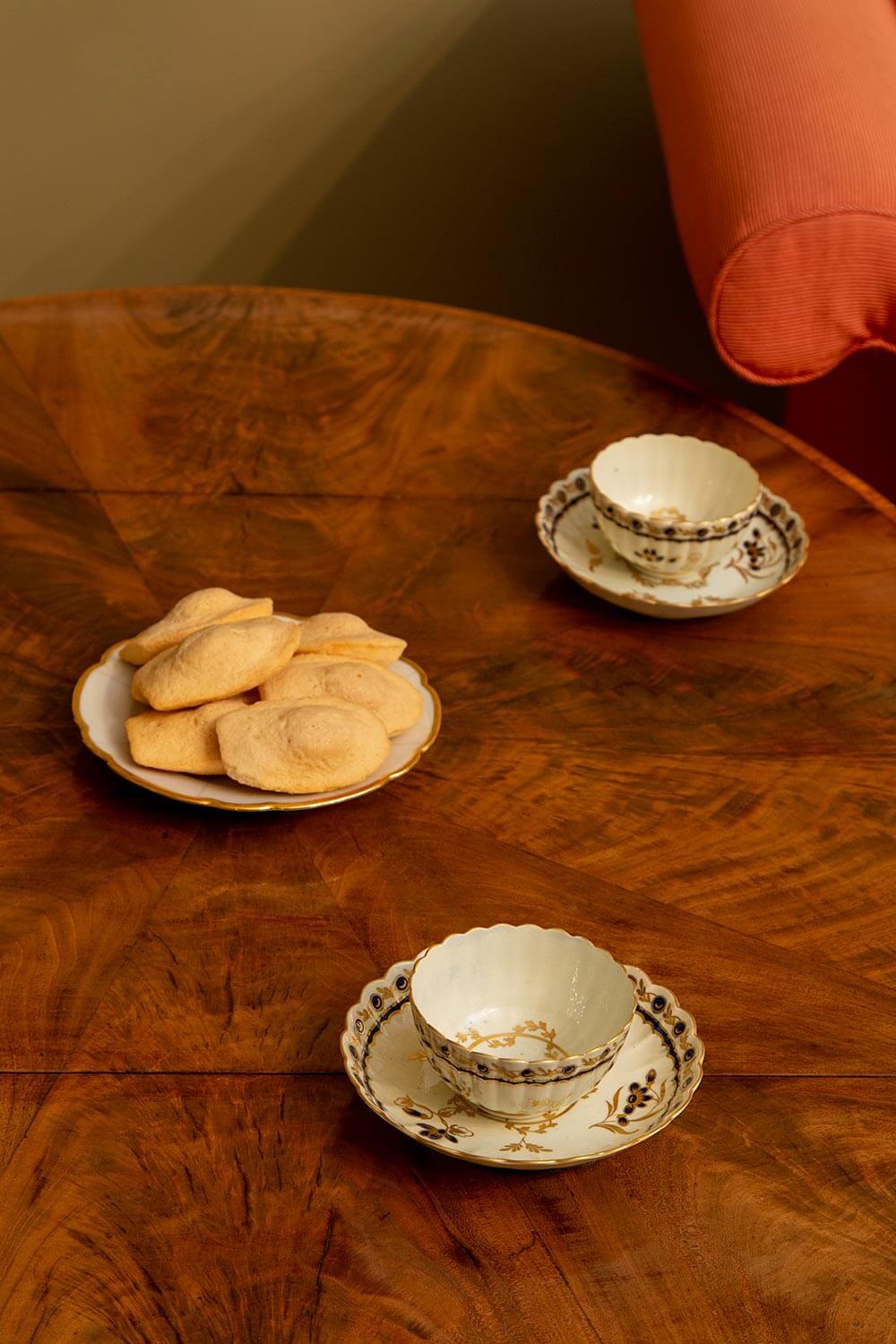
Before wallpaper, wealthy people used to hang various textile wall coverings, such as damask, in their homes. Often textile wall hangings included embroideries, chintzes, silk and cut velvets. The upholsterer installed the wall hangings either by nailing them over a canvas lining or by using a made-up wooden frame. Early wallpaper designs often copied patterns from these textiles.
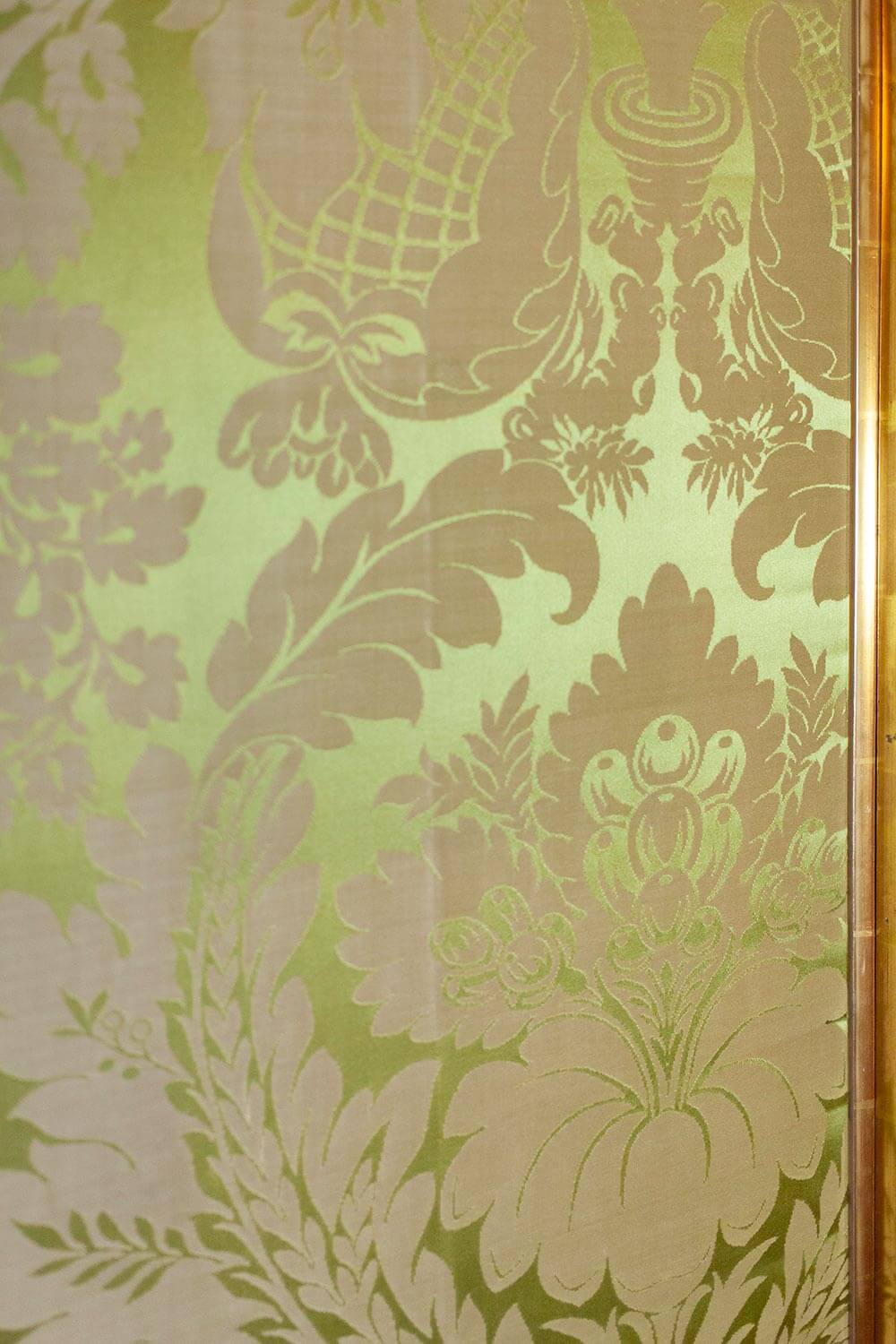
Some of our Georgian neighbours were living life to the full during the period. We know from reports of the time that there was an uproarious party at No. 30 Royal Crescent thrown by a lady referred to in the article as Mother Mac. The newspaper cutting reads;
“…She came down with her eyes rolling about like a ball grinding mustard seed in a wooden bowl. My cellar doors, Gentlemen, (said she) are locked, and those who will not go up and dance, are desired to walk out of my house. – But as Old Women must be considered as Old Women, and Young Men will be Young Men, neither was complied with. Glasses were broke, and the bare-picked drum-sticks and pinions flew about…”
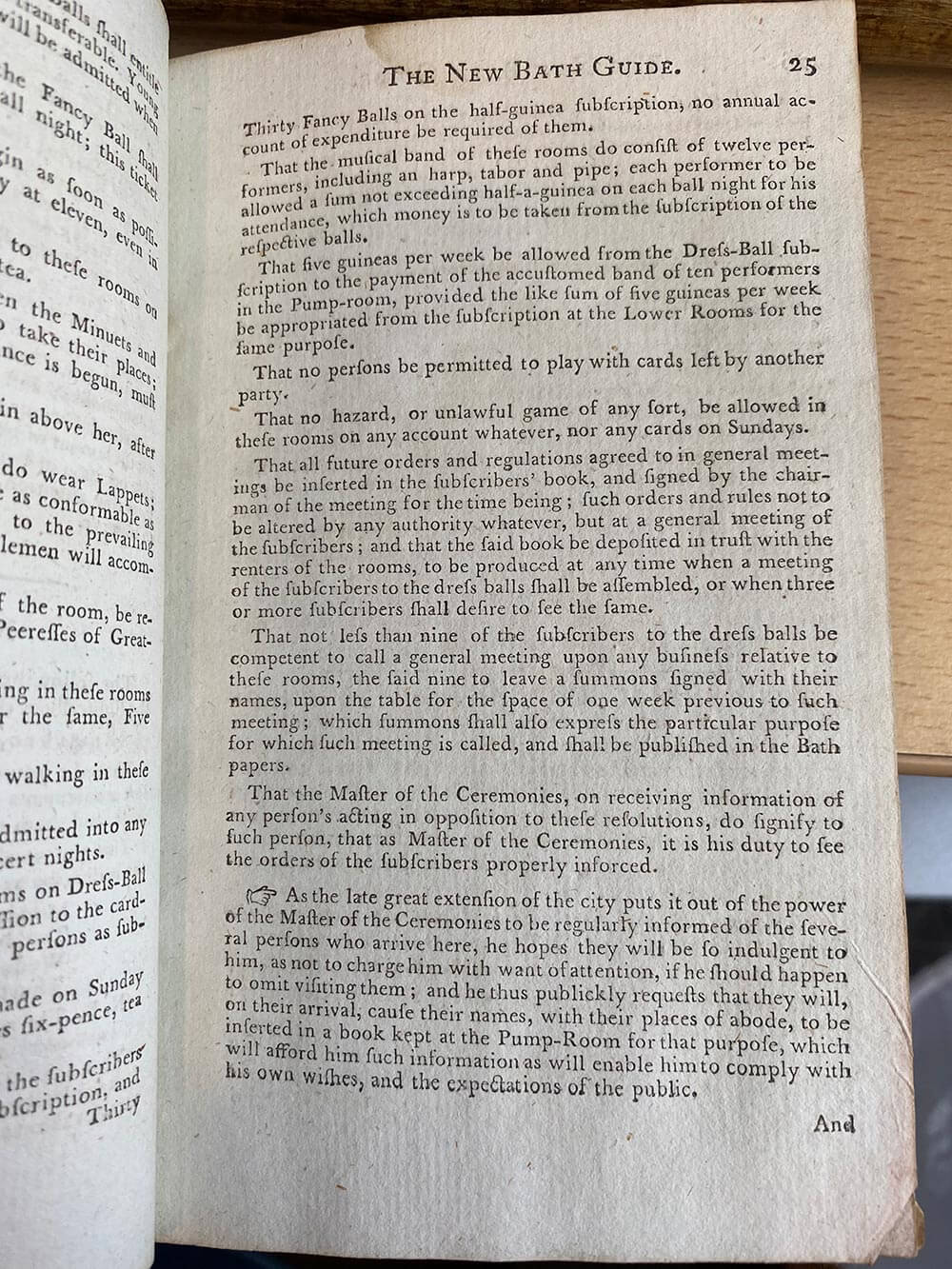
This page from The New Bath Guide lays out some of the rules and expectations at the gaming houses.
For the majority of the 18th century, the harpsichord would have been the most common instrument found in a domestic setting. Although it looks quite similar to a piano, the difference is that in a harpsichord, quills pluck the strings, whilst in a piano small hammers strike the strings.
This harpsichord was made by Jacob Kirckman in 1770.
On loan to No 1 Royal Crescent from a private collection.
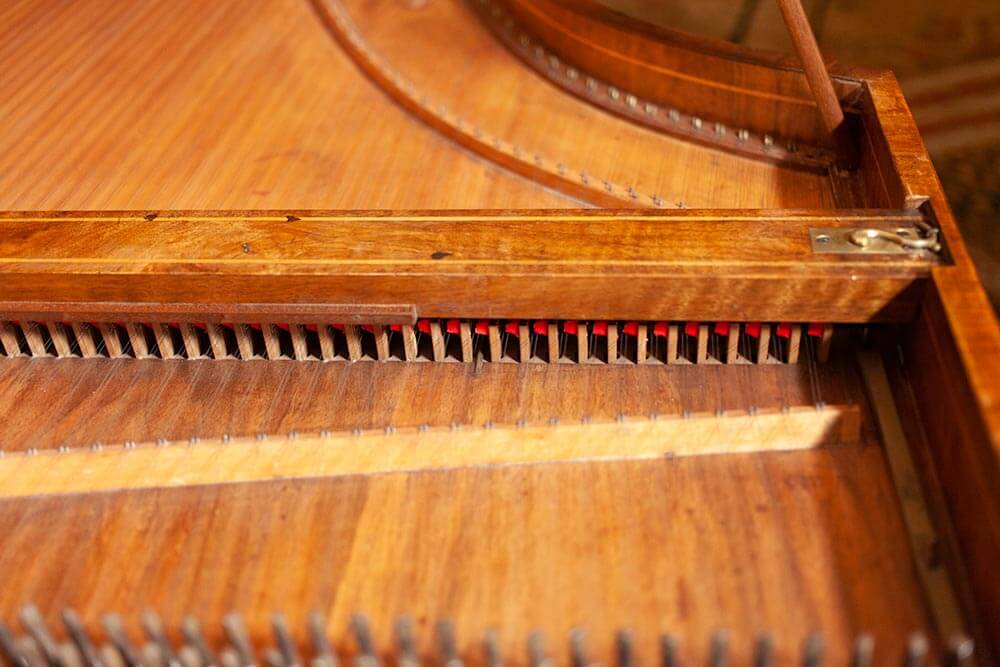
One of the most celebrated women of the 18th century Mary Delany was a ground-breaking female artist. This portrait was painted when Mary Delany was 82 and the artist Opie was just 21. Delany was a close friend and confidante of Queen Charlotte. The frame was designed by Horace Walpole.
On loan from the National Portrait Gallery.
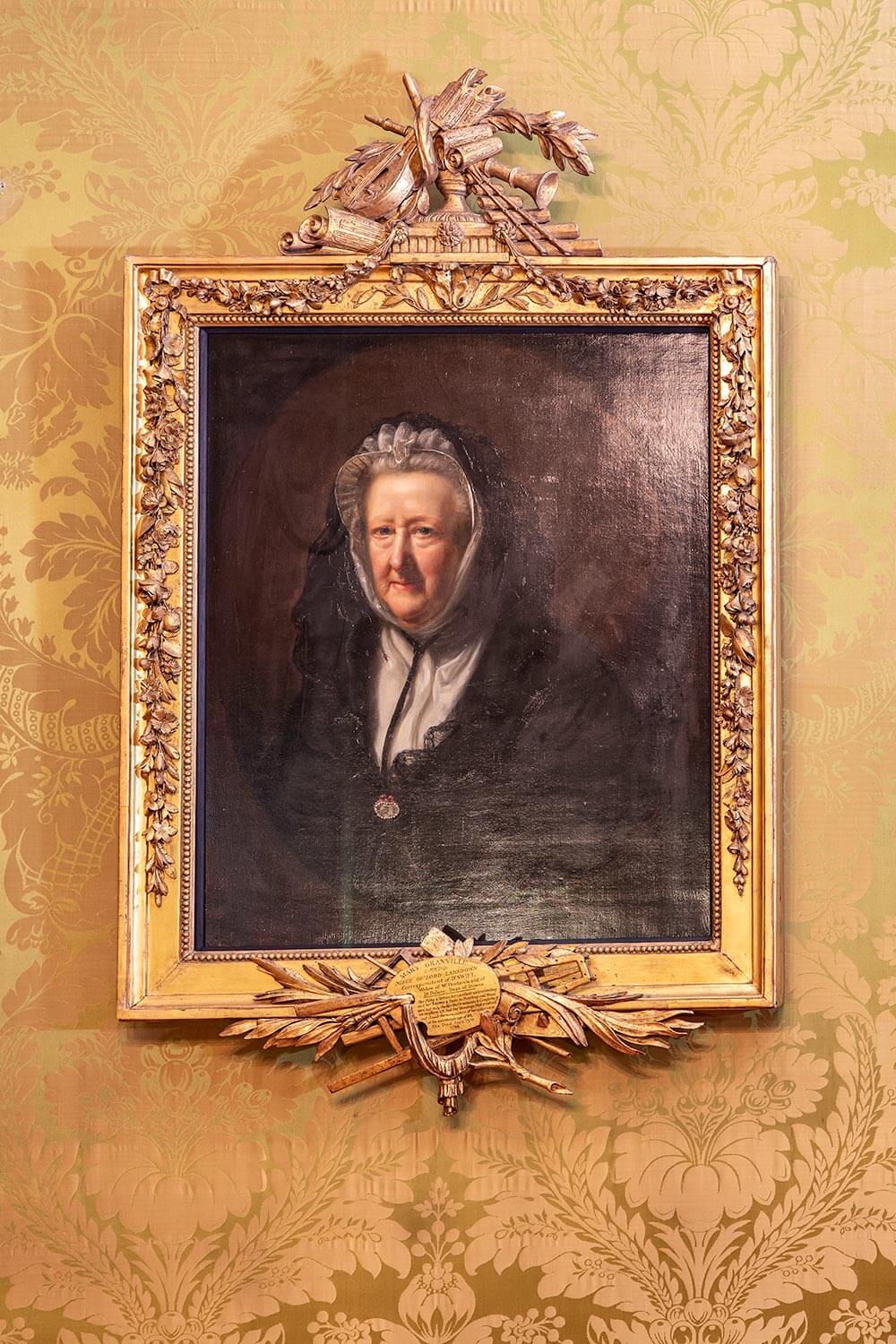
Rhoda Astley was a skilled amateur portrait artist at a time when few women were recognised in the art world. She studied painting under Arthur Pond, who painted this portrait of her when she was 25. She died in Bath seven years later.
On loan from the National Portrait Gallery
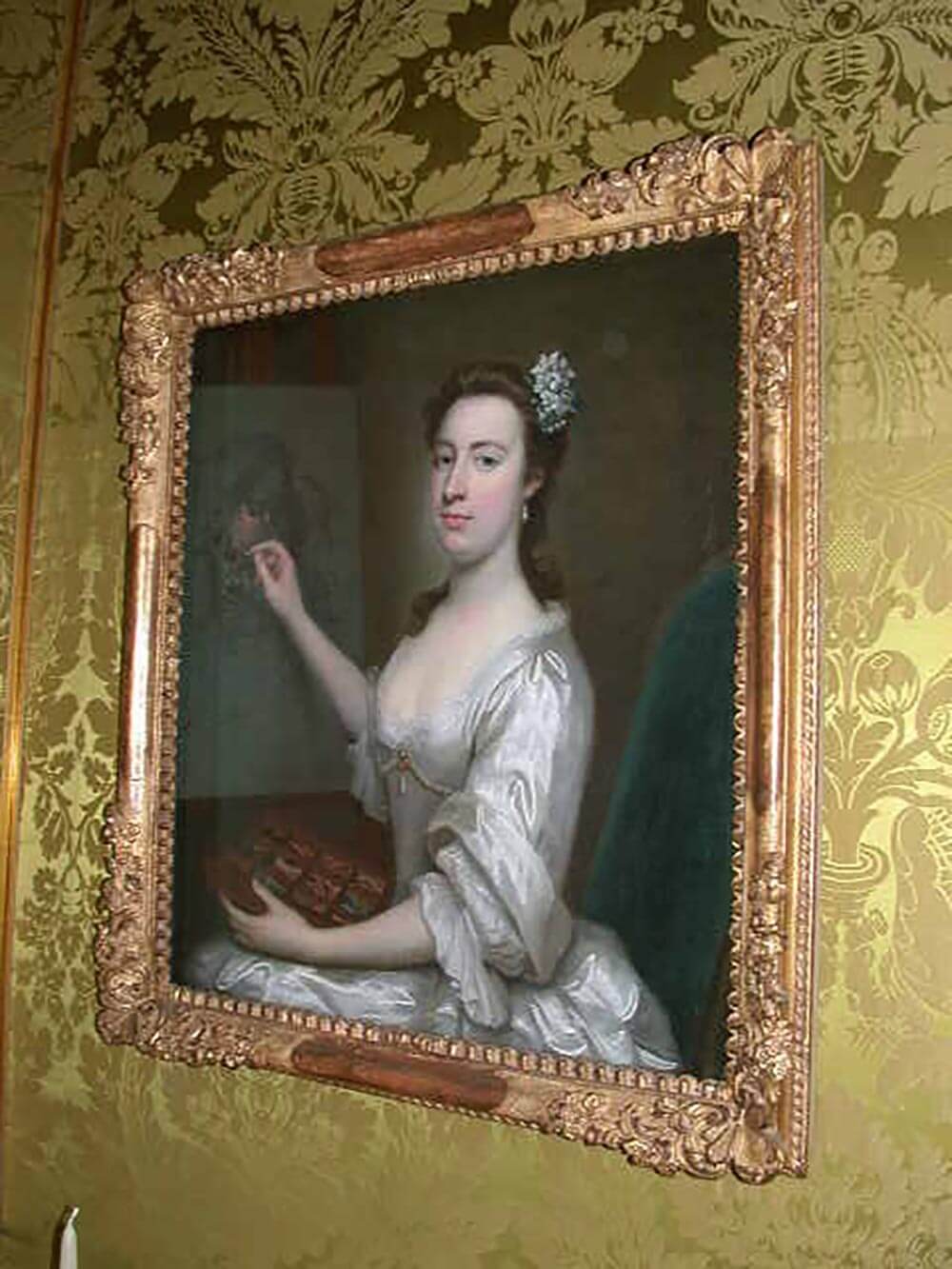
Made by Samuel Jones of Bath
The word ‘cartel’ comes from the Italian ‘cartela’ meaning bracelet. It is a rare clock with an eight day striking mechanism and was designed to imitate French Ormolu (a gold-coloured alloy of copper, zinc, and tin), but in fact is made of carved and gilded wood.
